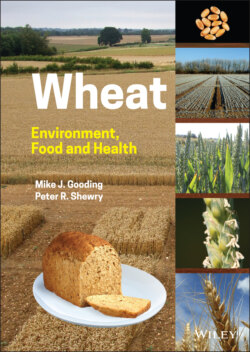Читать книгу Wheat - Peter R. Shewry - Страница 41
1.5.4.1 The Origin and Properties of Gluten
ОглавлениеGluten is a continuous proteinaceous network that is formed when wheat flour is mixed with water to form dough. It can be prepared at home by gently washing a ball of dough under running tap water or with dilute salt solution. This removes most of the soluble components, including the albumin and globulin proteins, plus the starch and other particulate matter, leaving a cohesive mass that can be extended but also shows elastic recoil (Figure 1.23). Gluten consists predominantly (75–80%) of proteins, most of which can be classified into two related groups called gliadins and glutenins. These two groups form the major storage protein fraction of the grain. However, they differ in that whereas the gliadins are present as monomers, the glutenins form high molecular mass polymers stabilised by inter‐chain disulphide bonds. Both groups can also be defined as prolamins in that the individual subunits (but not necessarily the polymers) are insoluble in water but soluble in alcohol‐water mixtures.
As storage proteins, the biological role of the gliadins and glutenins is to provide nitrogen (N), sulphur (S), and carbon skeletons to support seed germination and seedling growth. It is therefore serendipitous that the interactions of gliadins and glutenins with each other and with other components in wheat doughs have such dramatic effects on wheat utilization. This is because they largely define the rheological properties of doughs, including the balance between dough viscosity and elasticity that determines the quality for different end uses.
